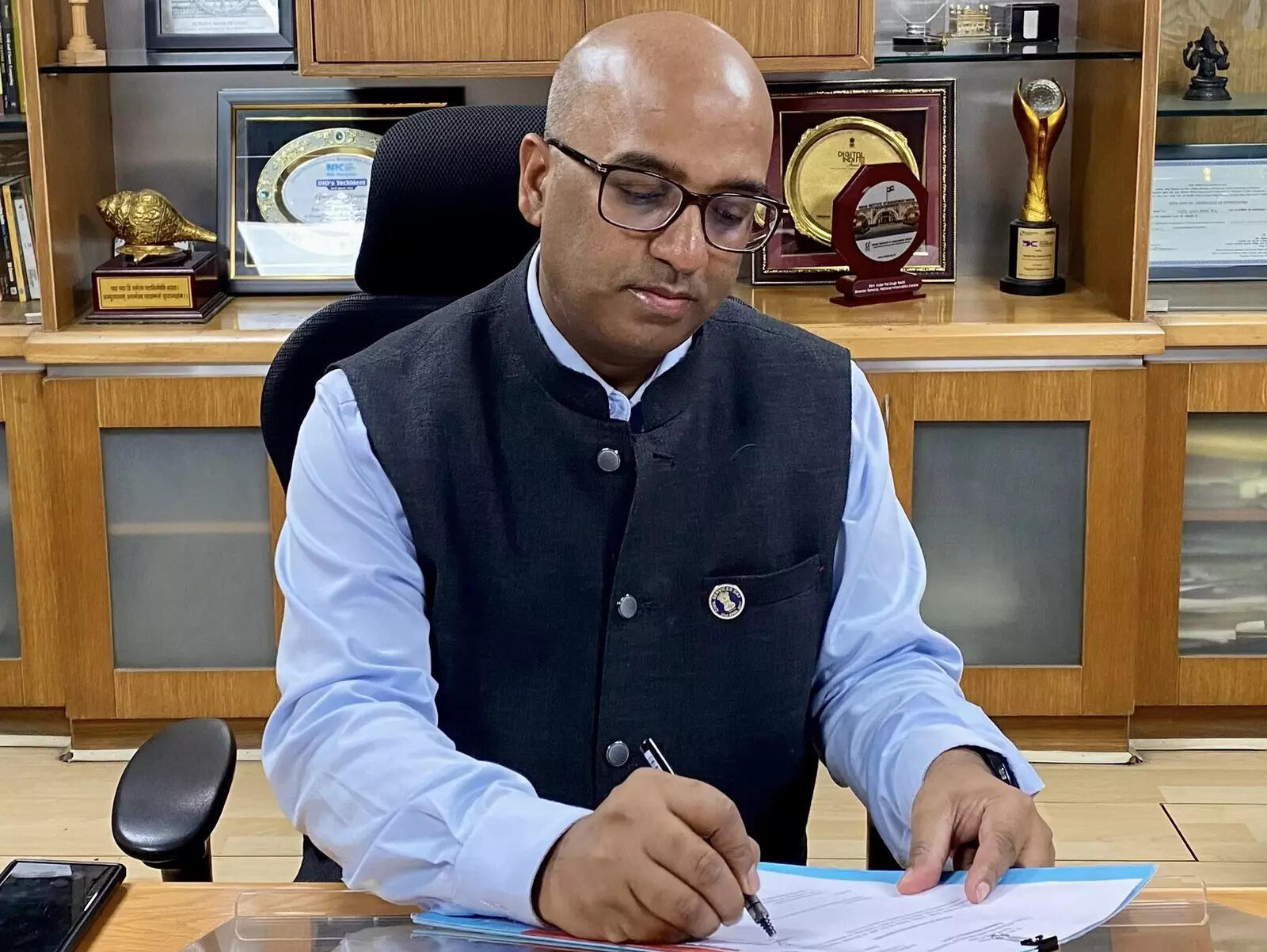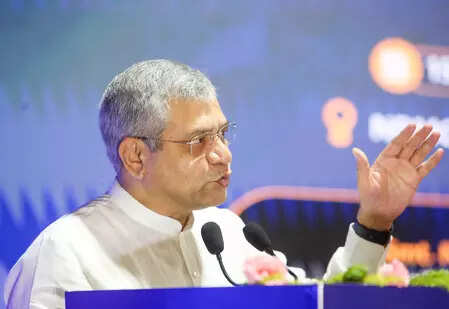
As Artificial Intelligence reshapes economies and governance worldwide, India is crafting its own path — one grounded in inclusion, ethics and national capability. At the heart of this transformation is the IndiaAI Mission, a ₹10,300-crore initiative that seeks to build the nation’s AI compute infrastructure, datasets, foundation models, and talent pipeline.
Spearheading this ambitious programme is Abhishek Singh, Additional Secretary, Ministry of Electronics and Information Technology (MeitY), CEO of the IndiaAI Mission, and Director General of the National Informatics Centre (NIC).
In this conversation with Anoop Verma, Singh discusses the government’s strategy to democratise compute, strengthen India’s AI ecosystem, and ensure that technological progress remains safe, ethical, and aligned with India’s socio-cultural fabric.
He also explains how NIC is driving the adoption of AI across ministries and states — from translation and document summarisation to predictive analytics and citizen services — laying the digital foundation for a new era of governance.
Edited excerpts:
Google has announced a USD 15 billion investment to build an AI hub in Visakhapatnam. How does this initiative align with India’s compute ambitions and infrastructure partnerships?
Google’s announcement is primarily aimed at augmenting data centre capacity, which is essential for building AI compute. As we move toward developing indigenous AI models, the demand for compute resources continues to rise exponentially. When hundreds of millions of Indians begin using AI applications across various sectors, the requirement for inferencing capacity will be immense.
Hence, investments such as Google’s one-gigawatt data centre in Visakhapatnam over the next five years are very welcome. They support data localisation, enable service delivery from infrastructure within India, and demonstrate confidence in India’s talent and technology ecosystem. This is just the beginning—many more global players are likely to invest in India’s AI infrastructure.
The government has democratised compute by making GPU access affordable—at about ₹65 per hour. How do you assess utilisation levels, and how do you ensure fairness among academia, startups and corporates?The ₹65-per-hour rate was arrived at through a transparent tendering process. We have empanelled multiple service providers offering GPUs and TPUs of various types—NVIDIA H200, H100, A100, L40, AMD MI300, AWS Inferentia, Google TPUs, and Intel Gaudi.
Currently, 28,000 out of 38,000 GPUs are installed and operational. These are being used by startups, researchers, and institutions that are building AI applications or training foundation models. For developers, 40% of the GPU cost is subsidised by the IndiaAI Mission, and for the 12 selected entities developing foundation models—such as Sarvam, Soket, Gnani, IIT Bombay, BharatGPT, GenLoop, Gentique, Tech Mahindra, and Fractal Analytics—the government provides compute support.
This ensures a level playing field and accelerates innovation across the ecosystem.
The IndiaAI Mission has an outlay of ₹10,300 crore and 38,000 GPUs under the Compute Pillar. How would you assess the progress made so far in building an AI ecosystem in India?
The IndiaAI Mission was approved in March 2024, and implementation began by mid-year after the elections. In less than a year, we’ve made significant progress across all seven pillars—Compute, Datasets, Foundation Models, Application Development, Skilling, Startup Financing, and Safe & Trusted AI.
We have operationalised the AIKosh datasets platform, which now hosts over 3,000 datasets, and provided funding support to 12 Indian-led foundation model developers. Under the Skilling Pillar, we are building Data Labs in Tier-2 cities to train youth as data scientists and annotators, while also supporting fellowships for AI researchers.
Under the Startup Pillar, we sent 10 AI startups to Station F in Paris for incubation and are working on a Fund of Funds to boost AI entrepreneurship. We are also developing tools under the Safe & Trusted AI pillar to ensure ethical and responsible AI deployment. The momentum is strong, and in the coming months, citizens will begin to see tangible Indian models and applications emerging from this mission.
What are the critical gaps or challenges you still see in India’s AI journey?
The mission has achieved a lot within a short span, but it’s still early days. Other countries have had a head start, so while we’ve made rapid progress, we need to catch up with the US and China. That will require sustained investment, innovation and collaboration between government, academia and industry.
Our goal is not merely to replicate global models but to build Indian solutions—AI systems that understand our languages, cultural nuances and governance needs. Achieving this will demand continuous innovation and a strong research pipeline.
The AIKosh platform hosts over 3,000 datasets and 243 AI models. How do you ensure data quality, interoperability and privacy across these resources?
We have established strict protocols, standard operating procedures, and privacy-preserving tools. Every dataset added to AIKosh undergoes validation for quality, anonymisation, and compliance with privacy norms. Access permissions are tiered based on use cases and sensitivity levels.
Our goal is to make high-quality, interoperable datasets available for innovation while maintaining full compliance with India’s data protection framework. This ensures that public data is used responsibly and ethically.
IndiaAI has supported teams like Sarvam, Soket and Gnani for foundational models. How do you see India competing with global tech giants in this domain?
Our aim is not to compete for the sake of competition but to ensure Aatmanirbharta (self-reliance) in AI. Indian models should meet India’s needs—linguistic diversity, cultural sensitivity, and governance use cases.
We are providing compute, data, and financial support to enable our startups and research institutions to build powerful foundation models. Over time, these models will be optimised for Indian contexts and can serve as global benchmarks for inclusivity and cost-efficiency.
What are the major strategic challenges India faces in the AI era?
Challenges and opportunities are two sides of the same technological evolution. As we move deeper into the AI era, three key challenges stand out for India.
First, if we do not build and control our own AI models, our data will inevitably be used to train foreign models. This would mean that India’s vast linguistic, demographic and behavioural data—one of our greatest strategic assets—will fuel external innovation rather than domestic capability. To ensure true digital sovereignty, Indian data must strengthen Indian-developed models, built by our researchers, startups and institutions, and trained within India’s jurisdiction.
Second, we must focus on developing responsible, transparent and trustworthy AI systems. Around the world, there have been troubling examples of AI models producing harmful or unethical outcomes—sometimes amplifying bias, misinformation, or even psychological harm. These incidents remind us that innovation without ethics can be dangerous. Our approach must embed ethical design, fairness, accountability and safety into every stage of AI development, so that technology serves humanity rather than the other way around.
Third, India must build strong regulatory, evaluation and testing capabilities. AI systems deployed in governance, finance, healthcare, or education must comply not only with technical standards but also with India’s cultural, legal, and linguistic context. This requires testing frameworks, benchmarking facilities and institutions capable of auditing AI behaviour at scale.
In short, the path forward lies in a balanced approach—combining technological progress with legal, ethical, and social safeguards. This equilibrium will enable India to harness the transformative power of AI while protecting the rights, values, and diversity of its people.
You also serve as the Director General of the National Informatics Centre. What kind of synergy can we expect between NIC and the IndiaAI Mission?
The NIC is the implementation arm of the government for deploying digital and AI within the public systems. It leverages AI for translation, dictation, document summarisation, predictive analytics and decision support.
NIC ensures that the benefits of AI reach governance at every level. It plays a critical role in operationalising the IndiaAI Mission by applying AI in ministries and state departments to improve efficiency and citizen service delivery.
What specific AI projects or tools has NIC developed for government use?
NIC’s Centre of Excellence in AI has developed several practical solutions—face verification and anti-spoofing tools for driving licences, life certificates, and examinations; AI-Manthan, a platform for creating and testing deep learning models; and AI-enabled modules for dictation, translation, and document summarisation in eOffice.
AI is also being deployed in GST networks, judiciary, education and agriculture systems. These initiatives are now being scaled up across states, with a strong focus on personal data protection and transparency.
How do you envision the role of NIC and IndiaAI evolving over the next five years?
The NIC will remain the technology partner and advisor to the government. While many projects will be executed through private partners, NIC’s role will be to ensure that all government digital systems are safe, secure, scalable, and sustainable.
We are also working closely with the Department of Science and Technology on emerging technologies like quantum computing, especially in cybersecurity and operational management. Over the next five years, IndiaAI and NIC will together shape a robust, ethical, and world-class AI ecosystem for governance and innovation.


